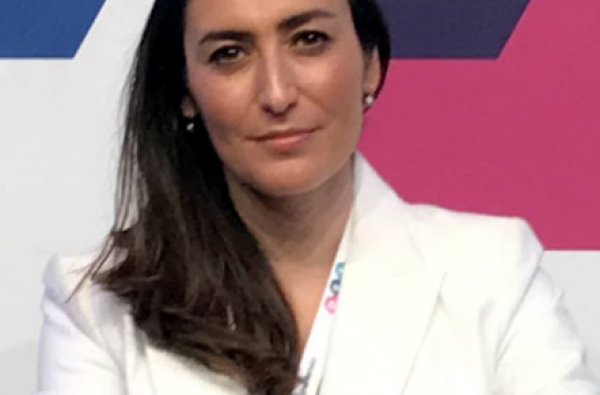By Marta Sotres
Originally Published by MIT Technology Review in Spanish
The sustainability of the companies of the future will go through disruptive solutions that adapt to the challenge of the aging population and put the elderly at the center of their strategy
The world population is aging. In 2050, one in six people in the world will be over 65 (16% of the population, compared to the current 9%), according to the UN World Population Outlook. It is estimated that for this year the adults over 65 segment will exceed the children under 15 segment for the first time in history. Also, we are living increasingly longer: in less than a century, the chances of turning 100 have increased from 1% to 50% in more developed countries, according to the Santalucía Institute.
The increase in life expectancy reflects the fruits of technological, scientific, and social developments. However, any structural-demographic change entails a transformation in society and market dynamics. With this novel context ahead, innovation becomes the only forge a path forward to design disruptive solutions towards business sustainability. Innovation can offer the decisive ability to adapt to future consumers and build new responses.
To refine the business strategy, it will be necessary to start from a somewhat unusual approach to innovation. The International Center on Aging defines it as follows: “An innovation that involves the adoption of changes, modest or substantial, in the process of aging of people, in their quality of life, in the spaces they inhabit and share, in the attention they receive and in social and family life.”
The Rise of the Silver Economy
Climate change, the ethical impact of AI, cybersecurity, and the vulnerability of privacy. There are many impending challenges, but if there is a trend with studied and predictable effects, it is that of global aging. The increase in population longevity will shake the axes that govern current markets. The costs arising from the increase in health care will have to be covered and a system that balances longer lives and longer career paths will have to be redesigned.
These changes will directly affect the urgency of training workers over 50 years of age, in early or late retirement and in the reinvention of the more senior professional role, which could revive the increasingly unsustainable public pension systems.
Also, on a financial scale, private savings and long-term planning will have to be strengthened now more than ever. Two sectors that are already taking action in this regard are banks and insurance companies. In the case of the latter, one of the formulas they are exploring to minimize risks when offering annuities is called "the fourth age." This model divides retirement into two stages: the first, from retirement to 85 and the second, from 85 to the estimated limit of human survival, 120.
The future of business goes through solutions such as these, designed for longevity, that put more focus on the silver economy. In fact, according to the report The Silver Economy, from the European Commission, Technopolis, and Oxford Economics, if this production system designed for the elderly was today a nation, it would be the third-largest economy in the world, after the United States and China. And the prospects are even more hopeful: it is estimated that the expenditure of the silver economy will grow 5% annually, to 5.7 billion euros in 2025, reaching 32% of European GDP and 38% of employment, and 88 million new jobs.

Longevity as a Business Opportunity
“Global aging is inevitable, but old age as we know it is not. It is a concept we have invented. Redefining it depends on us.” From the words of the MIT AgeLab’s director and author of The Longevity Economy, Joseph F. Coughlin, it follows that an opportunity is hidden behind this great global challenge. But only the companies that understand that this situation can adapt to and act on the demographic paradigm shift.
Within this new scenario there are two main areas of action:
-
Development of technological applications for active aging: It becomes increasingly necessary to develop products or services that promote the active participation of the elderly with public and private entities. Likewise, the development of intuitive and agile technological applications will be fundamental to improve their integration in the market, giving them autonomy and a better quality of life. This approach will require a lot: From services oriented towards leisure to those intending to improve health care with connected, emergency, and localized health devices.
-
Adapted technological habitats: The second major business action approach will be to build technological habitats adapted to the elderly. We are moving at full speed towards increasingly automated and technological cities, but the following question is rarely raised: can an aging population keep pace with those cities? Will it take a two-speed growth that does not leave out the elderly? We must consider, for example, making public transportation accessible for a greater number of people with reduced capacities and constructing homes adapted to the new physical and psychological needs of the population.
“Longevity Explorers”
If we start treating the elderly as a priority consumer group in the market, the technology sector will be forced to redefine its current offerings. Putting ourselves in the shoes of “new” consumers to empathize with their needs will require transforming the concept of old age (for it is all too often discriminatory) and designing technologies for the elderly.
For this reason, some companies have already begun to rely on Longevity Explorers, focus groups with members up to 90 years old become the new testers. At MIT AgeLab, for example, they have designed a physiological aging simulation suit in an attempt to approach future consumers. In the long term, however, it will be necessary to hire more senior profiles who have that implicit knowledge, without resorting to artificial supplements.
In the same vein, Opinno’s Chief People Officer in-residence, Blanca Gomez, warns of the need for a change of mentality within companies: “We must adapt to the new scenario and open up to other alternatives. We need companies that innovate in the flexibility of working days, who dare to personalize them and who do not get stuck in the traditional concept of having full-time employees.” Gomez understands that the future of employment will go through making custom contracts for the most senior persons. These agreements will include more open and flexible conditions adapted to the motivations of each worker. This will allow a transfer of knowledge with lower costs for the company.
In one way or another, the market of the future will experience a curious paradox: the secret of the most cutting-edge businesses will lie in the hands of the elderly. For it will be the elderly who mark the vitality of the most disruptive businesses.



